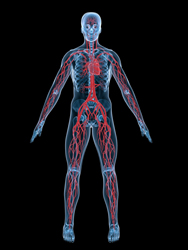Vascular niche of cancer stem cells
During cancer progression, cells acquire proliferative, survival and migratory properties as well as the ability to trigger the formation of a dedicated tumour blood supply. The bulk of the malignant cells in cancers contain a rare fraction of self-renewing, tumour-initiating cells, termed stem-like cancer cells (SLCCs). These cells constitute a reservoir for generation and/or maintenance of the tumours. As with developmental or normal stem cells, cancer stem cells reside within a stem cell niche, the heterogeneous composition of which always contains a vascular structure. The fact that SLCCs reside in close proximity to tumour blood vessels had led to the hypothesis of bi-directional exchanges between endothelial cells and SLCCs. The EU-funded project 'Vascular niche and tumor microenvironment' (VNTME-GAVARD) explored the nature of the interactions between SLCCs and brain endothelial cells, and how these impacted their functions. Researchers developed an original in vitro co-culture model between human SLCCs from high-grade glioblastoma and human brain endothelial cells. Using this setting, they demonstrated the importance of secreted endothelial factors in SLCC self-renewal. Targeting cancer stem cell niches may represent a new opportunity for treating cancer. Comparative analysis will ensure the development of the therapies that selectively target malignant stem cells and their niches.







